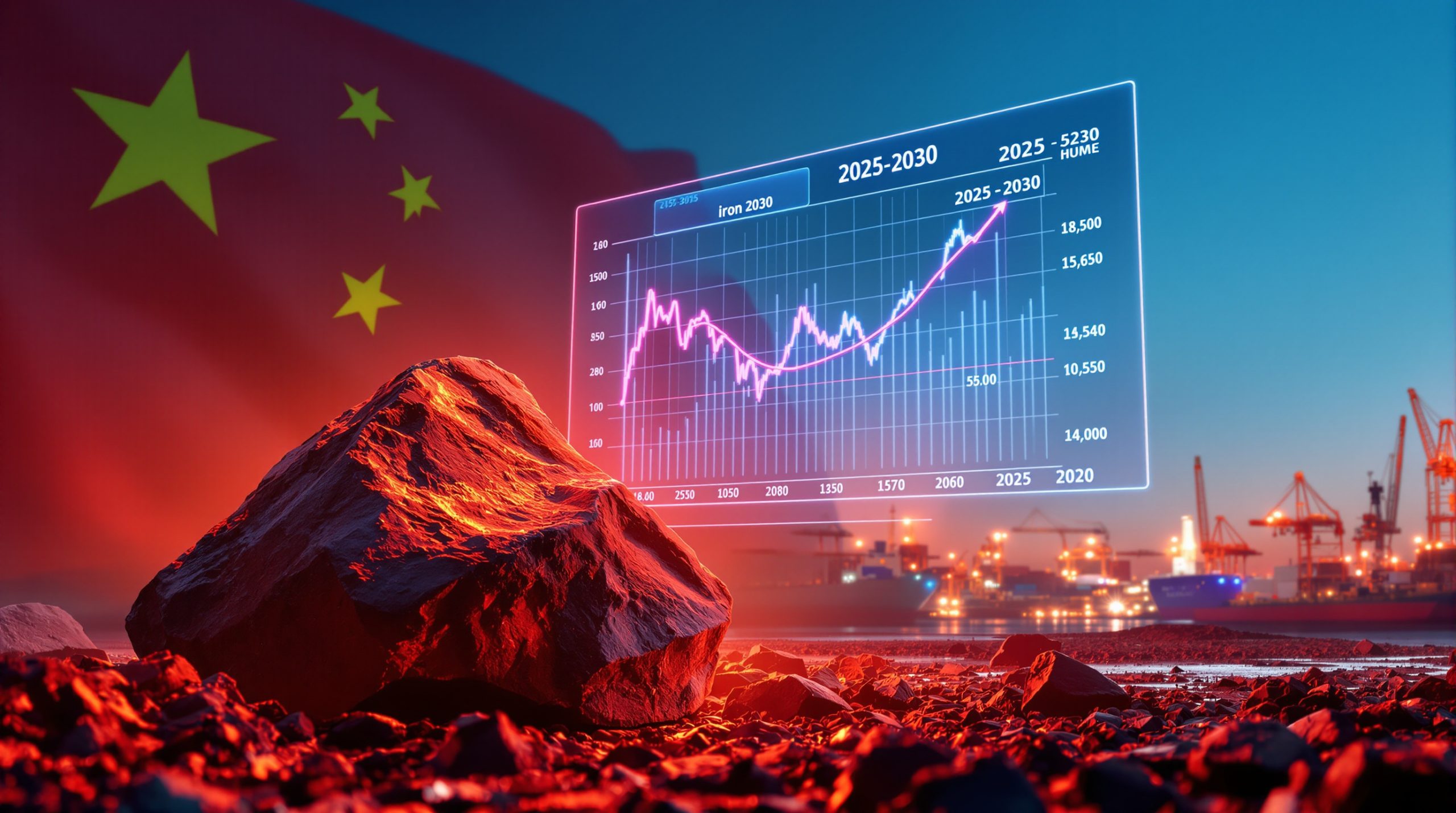What is Causing Titanium Slag Prices to Remain in the Doldrums?
The titanium slag market continues to face significant downward pressure in 2025, with prices struggling to gain momentum across all major production regions. According to the latest data from Shanghai Metal Market (SMM), prices have remained stagnant despite mounting production challenges for suppliers.
Current Market Pricing Overview
Current pricing data reveals substantial regional disparities across China's titanium slag markets:
- North China 90% low-calcium magnesium high-titanium slag: ¥6,690-7,000/mt
- Yunnan acid-soluble titanium slag: ¥4,650/mt
- Sichuan acid-soluble titanium slag: ¥5,820-5,870/mt
These figures highlight a remarkable price spread exceeding ¥2,000/mt between premium and lower-grade materials, reflecting significant quality differentials and regional market dynamics.
Supply-Demand Fundamentals Creating Market Pressure
The primary driver behind the market's weakness stems from a dramatic shift in downstream demand fundamentals:
- Severely reduced operating rates: Downstream titanium dioxide manufacturers are currently operating below 65% of capacity, creating a ripple effect throughout the supply chain
- Procurement volume collapse: Year-over-year purchasing has decreased approximately 20%, forcing producers to maintain unsold inventory
- Extended inventory cycles: Turnover days have stretched to approximately 25 days—a 40% increase from historical norms
- Widespread financial strain: Over 60% of titanium slag enterprises are currently operating at a loss
"The market weakness primarily stems from the continuous shrinking demand in the downstream titanium dioxide industry," notes SMM industry analysts in their June 2025 market assessment.
This creates what industry insiders describe as the classic "high purchase, low sales" dilemma—producers face substantial fixed costs for raw materials while selling prices continue declining, creating an unsustainable margin compression cycle.
How Has the Titanium Slag Market Been Performing Recently?
Market Trajectory Analysis
The titanium slag market has maintained its persistent downward trend throughout Q2 2025, with few signs of improvement on the horizon. Key performance indicators reveal:
- Daily price movements have flatlined, masking the underlying deterioration in market fundamentals
- Buyer sentiment remains cautious, with most downstream consumers operating on minimal inventory strategies
- Spot transactions have decreased by nearly one-third compared to the same period in 2024
- Forward contract negotiations increasingly favor buyers, with price clauses heavily weighted toward downside protection
This market dynamic has created an environment where producers must accept increasingly unfavorable terms simply to maintain operational continuity and preserve customer relationships.
Inventory Management Challenges
One of the most troubling trends for titanium slag producers has been the dramatic extension of inventory turnover periods:
- Key enterprises now report average inventory cycles of approximately 25 days
- This represents a 40% increase from the 15-18 day cycles considered healthy for the industry
- Some Sichuan-based producers have reported even longer cycles approaching 30 days
- Working capital requirements have increased substantially, straining balance sheets
"Key enterprises face extended inventory turnover periods, with some at risk of overstocking," according to SMM's latest survey data. This inventory accumulation creates a negative feedback loop—producers hesitate to reduce output due to high fixed costs, yet continued production without corresponding sales further deteriorates their financial position.
The inventory metrics reveal a fundamental truth about the current market: the industry cannot normalize until these elevated inventory levels are absorbed through either increased downstream demand or significant production curtailments.
What Factors Are Driving the Titanium Slag Market Downturn?
Downstream Demand Deterioration
The titanium slag market's struggles can be directly traced to the performance of its primary customer—the titanium dioxide industry:
- Operating rates across titanium dioxide producers have fallen below 65% capacity
- Procurement volumes have contracted approximately 20% year-over-year
- End-use markets (particularly architectural coatings and plastics) have reduced TiO₂ consumption
- Export markets have provided insufficient relief from domestic weakness
While Q2 traditionally experiences some seasonal softness in titanium dioxide demand, the 2025 decline has significantly exceeded historical averages. This suggests structural rather than cyclical issues may be affecting the market.
The lack of downstream demand has created an environment where titanium slag producers must compete aggressively for a shrinking pool of orders, driving titanium slag prices in the doldrums toward—and in some cases below—production cost thresholds.
Production Economics Under Pressure
The financial strain on titanium slag producers has intensified throughout 2025:
- Margin compression: Fixed costs for energy, raw materials, and labor remain elevated despite falling selling prices
- Limited adjustment options: The production process requires continuous operation, making partial curtailments technically challenging and economically inefficient
- Cash flow constraints: Extended payment terms from struggling customers further strain producer liquidity
- Scale disadvantages: Smaller producers lack the financial resources to weather prolonged market weakness
"This business dilemma of 'high purchase and low sales' has led to continuous expansion of industry losses," notes SMM's June 2025 market report. With over 60% of producers now operating at a loss, the potential for more significant production curtailments grows with each passing quarter.
The industry's cost structure suggests most producers require prices around ¥5,200/mt to achieve breakeven operations—a threshold already breached in regions like Yunnan where prices have fallen to ¥4,650/mt.
How Are Regional Markets for Titanium Slag Performing?
North China Market Dynamics
North China's titanium slag market maintains a significant premium over other regions:
- Premium-grade 90% low-calcium magnesium high-titanium slag commands ¥6,690-7,000/mt
- This premium product serves high-end applications requiring superior purity and performance
- Tender pricing from major industrial buyers has remained relatively stable despite market weakness
- Regional consolidation among producers has created a more disciplined supply environment
The North China market benefits from its proximity to major titanium dioxide producers and industrial clusters, reducing logistical costs while enabling closer supplier-customer relationships. Additionally, the higher-grade material produced in this region serves specialty applications less susceptible to economic cycles.
Southwest China Market Assessment
The Southwest regions of Yunnan and Sichuan present a dramatically different market picture:
- Yunnan acid-soluble titanium slag prices have fallen to ¥4,650/mt
- Sichuan acid-soluble titanium slag trades higher at ¥5,820-5,870/mt
- This substantial ¥1,220/mt regional differential reflects quality variations and logistical factors
- Yunnan producers benefit from lower electricity costs but face higher transport expenses to reach eastern markets
The lower-grade acid-soluble slag produced in these regions primarily serves standard-grade titanium dioxide production and industrial applications like ceramics manufacturing. This market segment has experienced more severe demand contraction, reflected in the steeper price declines.
The significant price gap between premium North China material (¥7,000/mt) and Yunnan production (¥4,650/mt)—exceeding ¥2,350/mt—underscores how quality differentials and end-use applications can dramatically impact market performance even within the same commodity category.
What Are the Short-Term Outlook and Key Indicators to Watch?
Market Forecast Considerations
Industry analysts anticipate continued challenging conditions for titanium slag producers through at least Q3 2025:
- Absence of catalysts likely to maintain downward pressure on prices
- Inventory normalization requires either demand recovery or significant production cuts
- Seasonal patterns suggest limited improvement until Q4 at earliest
- Financial pressure may force production rationalization among smaller producers
The market faces particular challenges in the current environment because titanium slag production features relatively high fixed costs and complex continuous processes that resist rapid adjustment. Additionally, many producers remain hesitant to curtail output significantly due to the substantial restart costs should demand suddenly improve.
Key Performance Indicators to Monitor
Market participants should closely track several critical indicators for early signs of market stabilization:
-
Titanium dioxide operating rates: The current sub-65% utilization must exceed 80% for three consecutive months to signal sustainable recovery (based on 2023 precedent)
-
Inventory metrics: Healthy turnover cycles of 15 days or less would indicate supply-demand rebalancing
-
Production discipline announcements: Major producers may signal coordinated output reductions to stabilize prices
-
Raw material trends: Ilmenite ore prices serve as leading indicators for cost structure changes
-
Export market performance: International orders could provide relief from domestic demand weakness
Historical patterns suggest titanium slag prices typically lag titanium dioxide market improvements by 4-6 weeks, making downstream operating rates the most reliable leading indicator for potential recovery.
What Strategic Options Are Available to Market Participants?
Producer Strategies in Challenging Markets
Titanium slag producers face difficult strategic choices in the current environment:
- Inventory optimization: Implementing just-in-time production systems to reduce carrying costs
- Product specialization: Shifting toward higher-value grades that maintain premium pricing
- Cost management: Exploring energy-switching options (coal to natural gas) and raw material blending
- Customer partnership: Developing long-term contracts with price collars to provide mutual stability
Some producers in Liaoning province have successfully pivoted toward chloride-process slag production, which commands an approximately ¥800/mt premium over standard grades and enjoys stronger export demand for aerospace applications.
For the majority of producers operating at a loss, survival depends on their ability to control non-essential costs while maintaining product quality and customer relationships through the downturn. Additionally, many are closely monitoring mining industry trends to identify potential diversification opportunities.
Buyer Strategies and Opportunities
Downstream titanium dioxide producers and other slag consumers can leverage the current market dynamics:
- Strategic inventory building: Current price weakness presents opportunities for forward-thinking consumers
- Supplier diversification: Qualifying alternative producers provides both pricing leverage and supply security
- Contract structure innovation: Developing risk-sharing mechanisms that provide stability for both parties
- Quality optimization: Testing lower-cost materials for applications previously using premium grades
The current buyer's market offers significant negotiating leverage, but consumers must balance short-term price advantages against the long-term need for a stable, financially healthy supplier base. Furthermore, some buyers are exploring mineral beneficiation insights to potentially reduce their dependence on titanium slag altogether.
FAQ: Titanium Slag Market Conditions
What is driving the current weakness in titanium slag prices?
The primary factor behind current market weakness is the significant reduction in downstream demand from titanium dioxide producers, who have reduced operating rates to below 65% and decreased procurement volumes by approximately 20% year-over-year. This demand deterioration has created excess inventory throughout the supply chain, placing downward pressure on prices.
How are titanium slag producers responding to market challenges?
Producers are facing extended inventory turnover periods (around 25 days, 40% higher than normal) and widespread financial losses, with over 60% of enterprises currently operating at a loss. This has created a challenging "high purchase, low sales" business environment where fixed costs remain elevated while selling prices continue declining. Most producers are focusing on cost management and customer retention rather than market share growth.
What is the price difference between regional titanium slag markets?
Significant regional price variations exist, with North China 90% low-calcium magnesium high-titanium slag priced at ¥6,690-7,000/mt, while Yunnan acid-soluble titanium slag trades at ¥4,650/mt and Sichuan at ¥5,820-5,870/mt. This spread exceeding ¥2,350/mt between highest and lowest prices reflects quality differentials, logistical factors, and regional supply-demand balances.
When might the titanium slag market begin to recover?
Without substantial positive support or significant improvement in downstream titanium dioxide demand, the market is expected to remain weak through Q3 2025. Recovery indicators would include titanium dioxide operating rates exceeding 80% for three consecutive months, inventory turnover cycles normalizing to 15 days or less, and coordinated production discipline among major producers. Historical patterns suggest titanium slag prices typically lag titanium dioxide market improvements by 4-6 weeks.
The outlook for titanium slag prices may also be influenced by broader industry consolidation trends and iron ore pricing insights, as both minerals often share similar market dynamics. Additionally, titanium slag producers are carefully monitoring developments in the copper sector, where fallen copper prices may provide indicators of broader industrial metal market trends.
Disclaimer: This market analysis contains forward-looking statements regarding titanium slag prices and market conditions. These projections are based on current trends and available data but are subject to change based on economic conditions, policy developments, and unforeseen market events. This information should not be considered investment advice.
Looking to Invest in the Next Major Mineral Discovery?
Discovery Alert's proprietary Discovery IQ model delivers instant notifications of significant ASX mineral discoveries, transforming complex data into actionable insights for traders and investors. Explore why major mineral discoveries lead to exceptional market returns by visiting the Discovery Alert discoveries page and position yourself ahead of the market.




